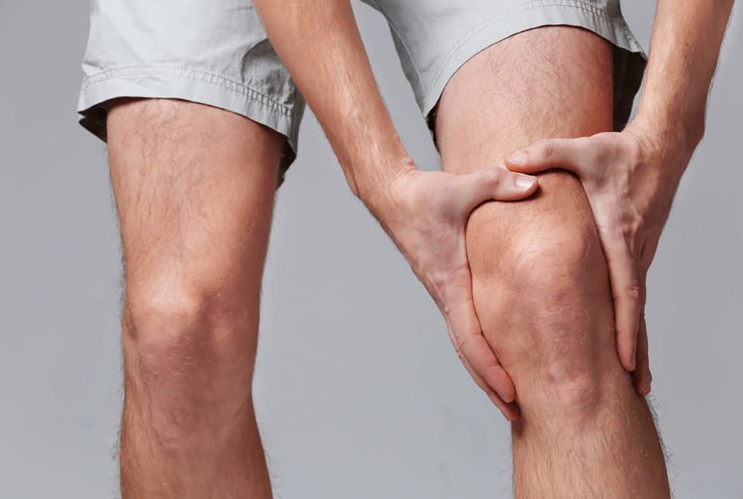
How do physiotherapists manage Osteoarthritis?
Osteoarthritis (OA) has a broad reaching negative impact on individuals, ranking as the 11th highest contributor to global disability.[1] When it comes to the treatment of OA, physiotherapists are central to the management of symptoms and progression through the delivery of exercise programs.
Although OA is more likely to affect older adults, one study found that 1 in 8 people with symptomatic knee OA was under 45 years old, and nearly half were between 45 and 64 years of age.[2] Studies have shown that the number of people suffering osteoarthritis is projected to rise with the aging of the population and increasing rates of obesity in Australia.[3]
Osteoarthritis is most frequently found in the knee joint, where years of joint impact and shear forces as well as posttraumatic risk factors cause early cartilage degeneration and joint aging.[4] The predominant symptoms are pain, decreased joint range of motion, swelling and physical disability.
Can osteoarthritis be prevented?
With the mounting financial and physical burden of OA, there is increasing interest in early intervention and treatment to improve outcomes and reduce long-term morbidity.[5] A number of studies have shown that exercise can improve outcomes of pain and physical function in people with osteoarthritis.[6]
In fact, exercise, education and weight management are recommended as the first steps in clinical guidelines for reducing the likelihood of suffering osteoarthritis.[7]
Exercise, weight loss and osteoarthritis
Osteoarthritis is a multifactorial disease with a pathogenic link to muscle function and volume that is not entirely understood. Researchers have found though that exercise interventions improved pain and physical function in overweight and obese people with knee osteoarthritis.[8] Weight loss over 48 months was associated with slowed knee cartilage degeneration and improved knee symptoms in patients at risk for or with radiographic evidence of mild-moderate knee OA. This is a double edged sword though as many patients suffering from OA simply refuse to start exercising due to their joint pain.
Can hydrotherapy reduce arthritis pain?
Hydrotherapy is an excellent way for those suffering from osteoarthritis to build strength, ease stiff joints and relax sore muscles using the waters buoyancy to greatly reduce the pressure on your joints.[9] This makes it easier to perform a variety of range of motion exercises without the fear of falling over or causing further pain. The water in the Lane Cove Physio hydrotherapy pool is also specifically heated to 34 degrees Celsius in order to increase circulation and blood flow while the increased temperature helps to soothe joint pain and inflammation. Arthritis Australia recommends trying Hydrotherapy and lists it as an effective exercise for those suffering from different forms of arthritis.[10]
How does physiotherapy help to reduce arthritis pain?
The first step is by making an accurate diagnosis of the arthritic condition. Musculoskeletal physiotherapists are expertly trained to determine the onset and pattern of the pain and do clinical examinations of the joints and their movements. As a musculoskeletal physiotherapist I regularly see new patients with undiagnosed arthritis who originally present to the physiotherapy clinic for help with their spine, hip, knee, shoulder or hand pain and stiffness. By completing a full body and physical history assessment with each client a musculoskeletal physio will likely be able to determine the root cause of the pain and identify the form of arthritic condition being suffered by the patient.
At Lane Cove Physio we strive to help our patients understand their arthritis in its current state and put a plan in place to reduce pain and wear and tear in the future. Physiotherapists should embrace patient self management and teach patients the how and why of their condition including:
- Techniques to manage joint pain
- Strategies to reduce joint swelling
- Joint protection – ways to reduce strain on joints and prevent or minimise joint deformities
- Exercises to restore and maintain joint mobility
- Exercises to improve and maintain strength and function
[1] Cross M, Smith E, Hoy D, et al. The global burden of hip and knee osteoarthritis: estimates from the global burden of disease 2010 study. Ann Rheum Dis 2014;73:1323–1330.
[2] Deshpande BR, Katz JN, Solomon DH, et al. Number of persons with symptomatic knee osteoarthritis in the US: impact of race and ethnicity, age, sex, and obesity. Arthritis Care 449 Res (Hoboken ) 2016;68:1743–1750.
[3] Hunter DJ, Schofield D, Callander E. The individual and socioeconomic impact of osteoarthritis. Nat Rev Rheumatol 2014;10:437–441.
[4] Felson DT, Naimark A, Anderson J, Kazis L, Castelli W, Meenan RF. The prevalence of knee osteoarthritis in the elderly. The Framingham Osteoarthritis Study. Arthritis and Rheumatism. 1987;30(8):914–918.
[5] Hunter DJ. Lower extremity osteoarthritis management needs a paradigm shift. Br J Sports Med 2011;45:283–288.
[6] Nelson AE, Allen KD, Golightly YM, et al. A systematic review of recommendations and guidelines for the management of osteoarthritis: the chronic osteoarthritis management initiative of the U.S. bone and joint initiative. Semin Arthritis Rheum 2014;43:701–712.
[7] Hall M, Castelein B, Wittoek R, et al. Diet-induced weight loss alone or combined with exercise in overweight or obese people with knee osteoarthritis: a systematic review and meta-analysis. Semin Arthritis Rheum 2019;48:765–777.
[8] . Brandt KD. Putting some muscle into osteoarthritis. Annals of Internal Medicine. 1997;127(2):154–156.
[9] A Study of Hydrotherapy and Its Health Benefits, Mozhdeh Bahadorfar, International Journal of Research (IJR) Vol-1, Issue-8, September 2014
[10] https://arthritisaustralia.com.au/managing-arthritis/living-with-arthritis/physical-activity-and-exercise/water-exercise/



